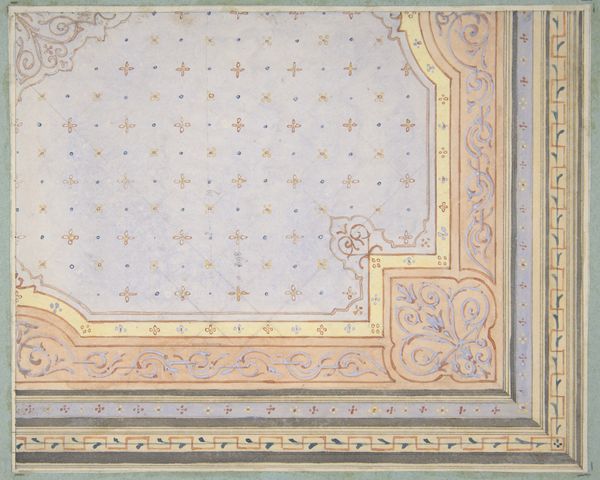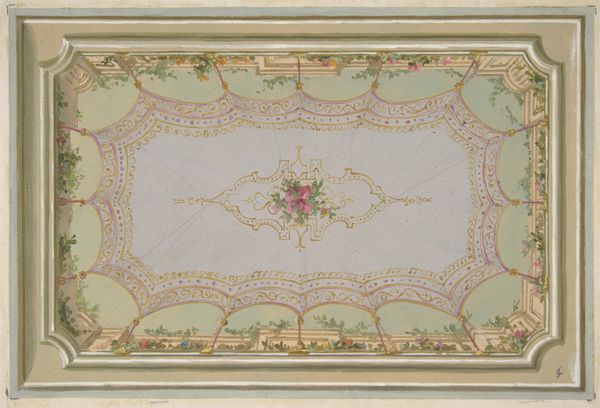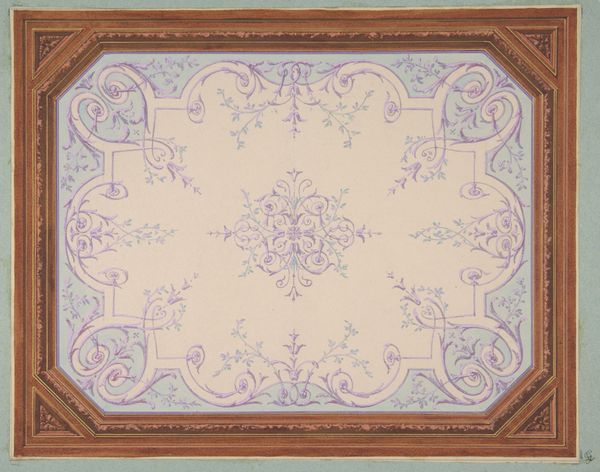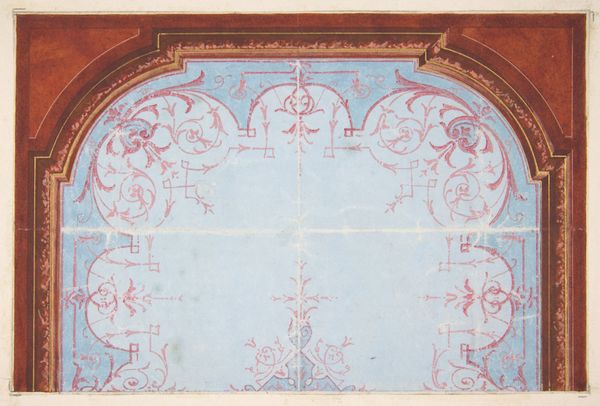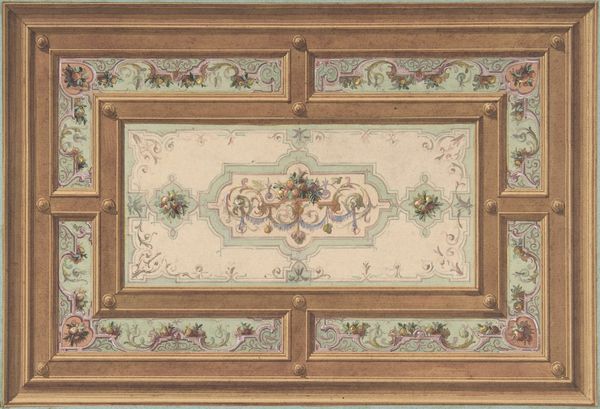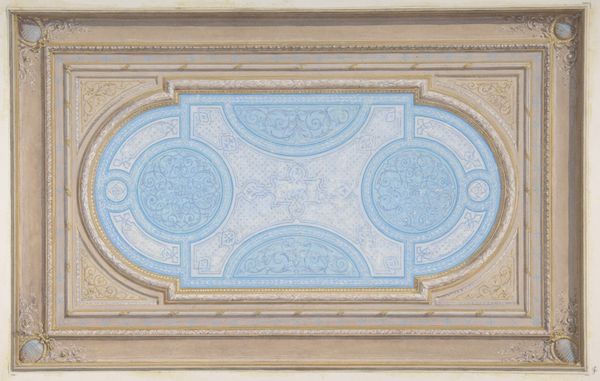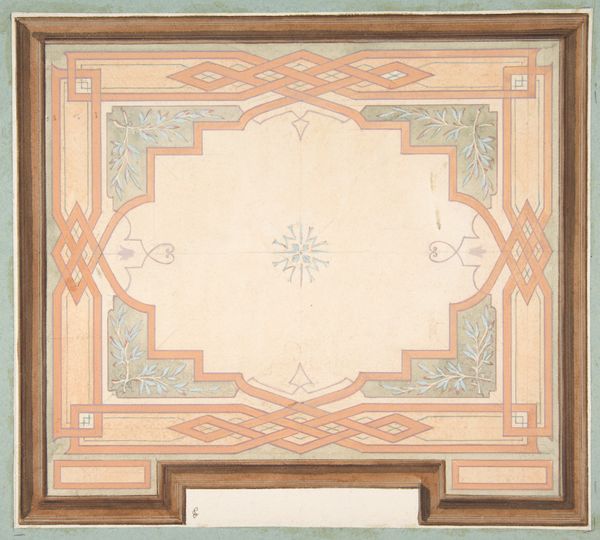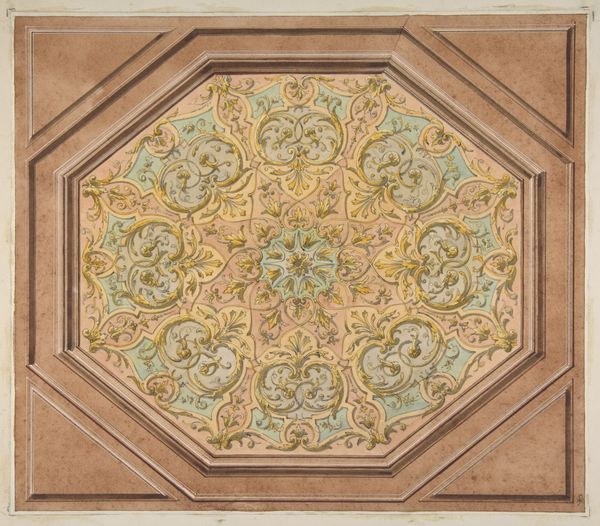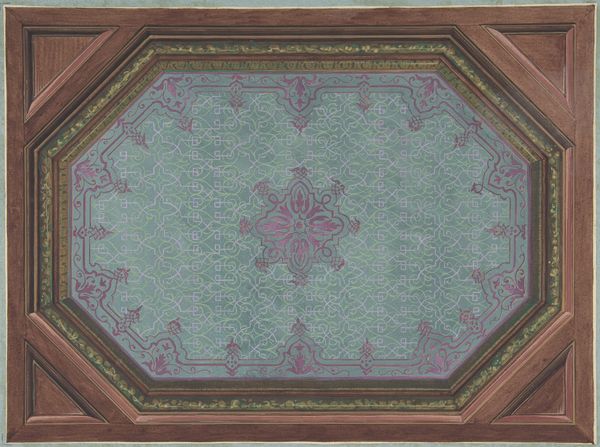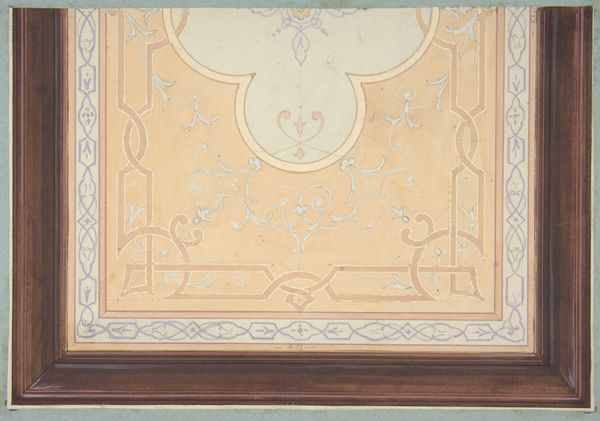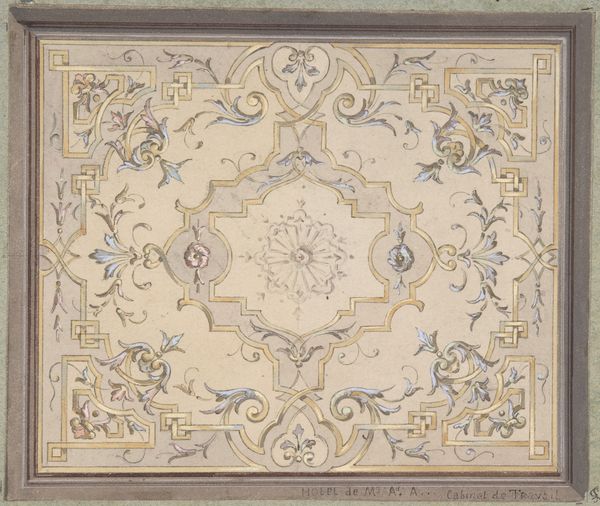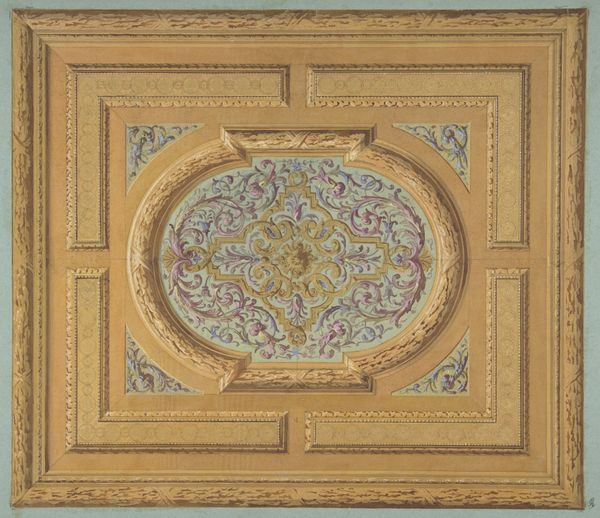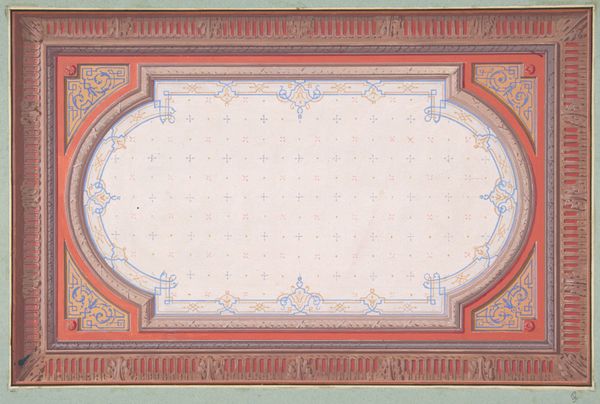
Design for the decoration of a ceiling with urns, swags, and portrait medallions in the four corners 1830 - 1897
0:00
0:00
drawing, print
#
drawing
# print
#
watercolor
Dimensions: Overall: 13 1/8 x 19 3/8 in. (33.4 x 49.2 cm) image: 10 11/16 x 14 11/16 in. (27.2 x 37.3 cm)
Copyright: Public Domain
Editor: This is Jules-Edmond-Charles Lachaise’s "Design for the decoration of a ceiling with urns, swags, and portrait medallions in the four corners," a watercolor drawing from the late 19th century. It has a beautifully ornate, almost cake-like quality to it! How would you interpret this work? Curator: It is striking how the design elements evoke cultural memory. Urns, swags, medallions - these aren't merely decorative. Consider the urn, a vessel of commemoration since antiquity; its presence speaks of history, lineage, a connection to the past that elevates a domestic space. What feelings are conjured when you imagine looking up at that ceiling? Editor: It feels very stately and considered, perhaps a little imposing? The kind of room where serious decisions are made. Curator: Exactly! These motifs would tell a story to the room's occupants and visitors. Each element deliberately chosen to convey status, taste, and perhaps even aspirations. These are the kinds of symbols that can reinforce power dynamics and create a very specific atmosphere within a home. Does it strike you as timeless or firmly planted in a certain era? Editor: It definitely feels rooted in its time; those motifs seem very specific to the 19th century and its revival of classical styles. I guess these symbols were like visual shorthand for education and wealth. Curator: Precisely! The resurgence of classical motifs suggests more than aesthetics. It signifies the patron's alignment with perceived virtues of those past eras, attempting to bring forward historical legitimacy and gravity into their own space and time. The portraits, urns and ornamentation, function like family crests of power and meaning. Editor: That's fascinating! It completely changes how I view what seemed like "just" decoration. It is clear that every detail was intentional. Thank you! Curator: My pleasure. Thinking of art in its original setting truly allows us to see it as more than an object. We can uncover layers of intentional meaning when considering who was supposed to see the art, and what it communicated to them.
Comments
No comments
Be the first to comment and join the conversation on the ultimate creative platform.
